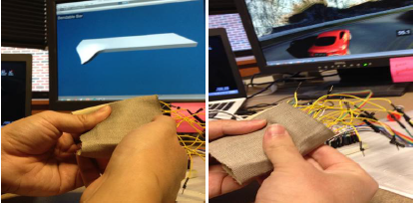We present BendID, a bendable input device that recognizes the location, magnitude and direction of its deformation. We use BendID to provide users with a tactile metaphor for pressure based input. The device is constructed by layering an array of indium tin oxide (ITO)-coated PET film electrodes on a Polymethylsiloxane (PDMS) sheet, which is sandwiched between conductive foams. The pressure values that are interpreted from the ITO electrodes are classified using a Support Vector Machine (SVM) algorithm via the Weka library to identify the direction and location of bending. A polynomial regression model is also employed to estimate the overall magnitude of the pressure from the device. A model then maps these variables to a GUI to perform tasks. In this preliminary paper, we demonstrate this device by implementing it as an interface for 3D shape bending and a game controller.
 

